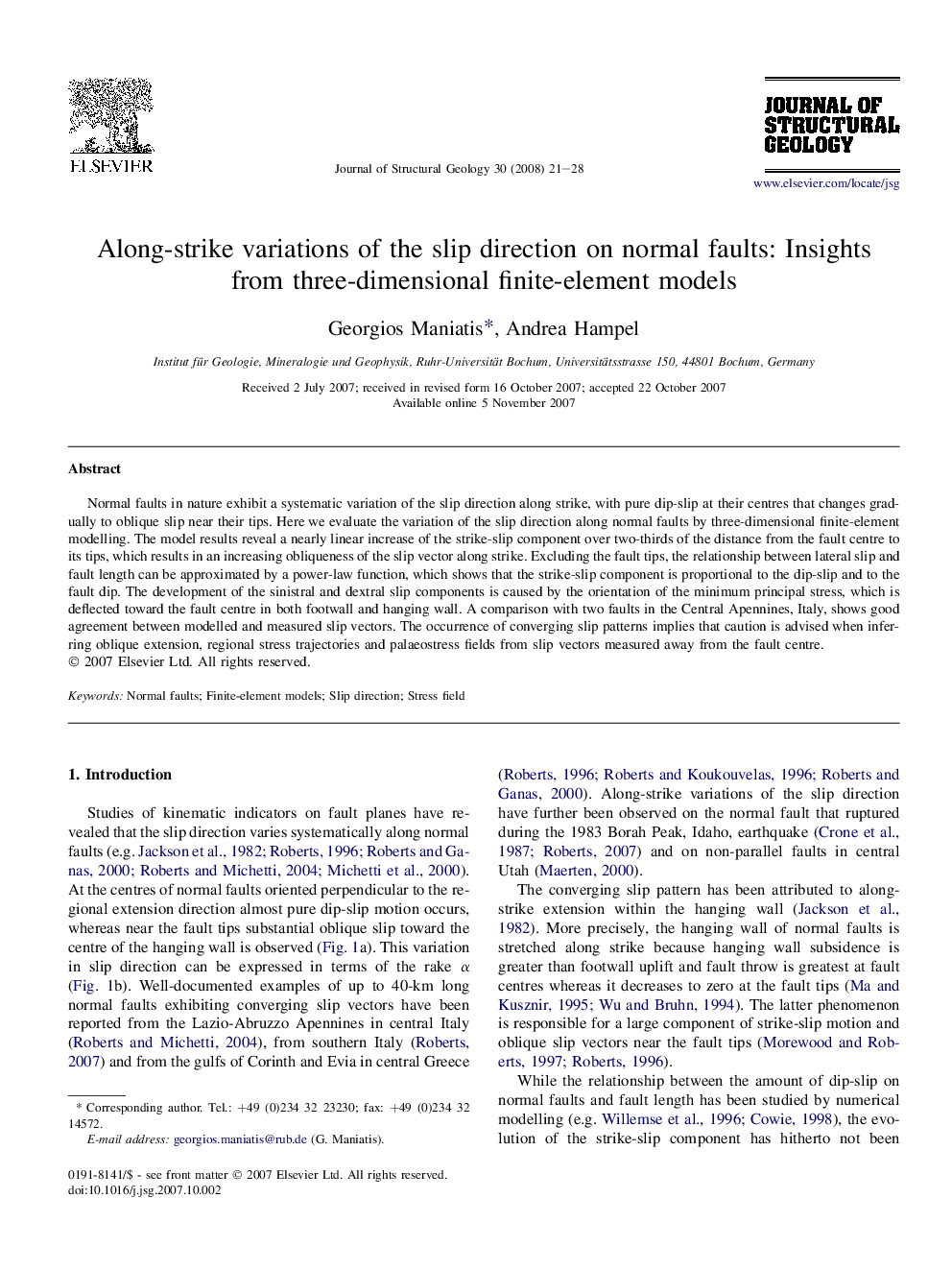| Article ID | Journal | Published Year | Pages | File Type |
|---|---|---|---|---|
| 4733772 | Journal of Structural Geology | 2008 | 8 Pages |
Normal faults in nature exhibit a systematic variation of the slip direction along strike, with pure dip-slip at their centres that changes gradually to oblique slip near their tips. Here we evaluate the variation of the slip direction along normal faults by three-dimensional finite-element modelling. The model results reveal a nearly linear increase of the strike-slip component over two-thirds of the distance from the fault centre to its tips, which results in an increasing obliqueness of the slip vector along strike. Excluding the fault tips, the relationship between lateral slip and fault length can be approximated by a power-law function, which shows that the strike-slip component is proportional to the dip-slip and to the fault dip. The development of the sinistral and dextral slip components is caused by the orientation of the minimum principal stress, which is deflected toward the fault centre in both footwall and hanging wall. A comparison with two faults in the Central Apennines, Italy, shows good agreement between modelled and measured slip vectors. The occurrence of converging slip patterns implies that caution is advised when inferring oblique extension, regional stress trajectories and palaeostress fields from slip vectors measured away from the fault centre.
